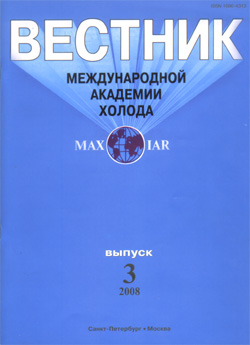
Optimization of cryogenic piping using Pareto optimal solution method

Annotation
The article deals with optimization of cryogenic piping, performance criterion being hydraulic and heat pressure loss power. Cryogenic liquid flow is described by differential equations system (equation of motion and continuity, equation for thermal condition of liquid (energy equation); system of equations for thermophysical properties of cryogenic liquid). Then we use finite differences instead of differentials to get numerical solution. Parameter space method is used for optimization. It allows quick response to intermediate calculation results and parameters upgrading, so, finding solutions becoming optimal. Numerical analysis algorithm for system space parameters and flow-scheme are given. The theory is exemplified by optimization of app. 100 m. length cryogenic piping for liquid nitrogen. Inner tube diameter is 36×2 mm, pipe casing diameter is 100×2 mm. Optimal solutions are given. The best sampling point (parameter set) is chosen. The total loss is within 1.3 kW there.
Keywords
Постоянный URL
Articles in current issue
- The 22th General Annual Meeting of the International Academy of Refrigeration
- Results of the IAR’s work in 2014–2015
- Antioxidant activity of CO2-extracts of some plants and prospect of their use in technology of food fish oils
- The use of extruded wheat in the brewing
- The use of oatmeal in technology of functional foods
- Physicochemical properties of frozen desserts for special purposes
- Optimal design of a wind system for water pumping. Using a genetic algorithm
- Heated air curtain starting operating modes
- LNG regasification prospects
- Mathematical model of radio-electronic apparatus cooling system with fusion-type thermal storage accumulators and additional air-cooled heat sink
- Optimization of cryogenic piping using Pareto optimal solution method
- Estimation of frost formation rate on the surface of cooling element in electrical convection air medium
- Cognitive information technology of food industry objects monitoring on the basis of entropy potentials theory
